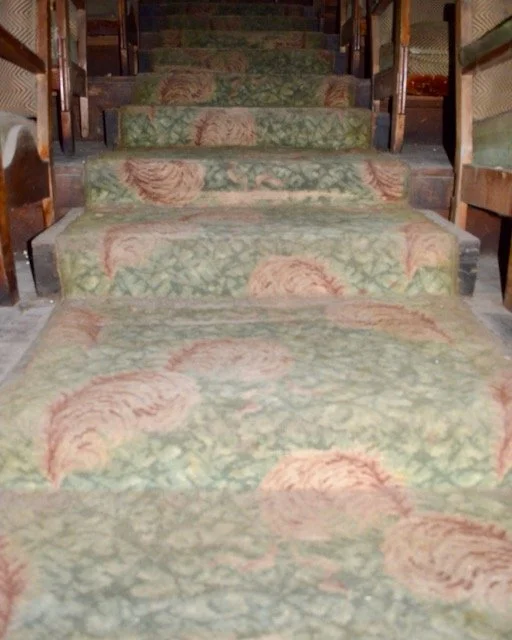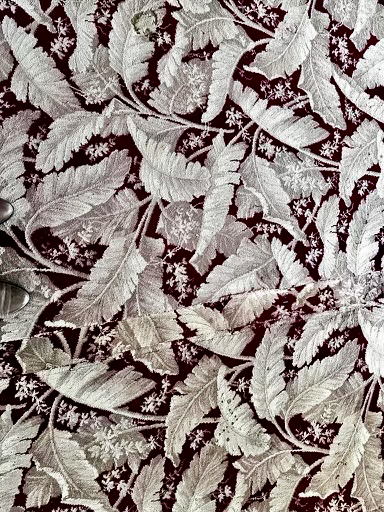The Liberty Theatre in Yass was built and opened in December 1939 and the building today contains many original features. One of these is the original green carpet which still lines the aisles in the upstairs dress circle.
The green and fawn-coloured carpet with feather motifs was commissioned by the original owner and was supplied and laid by Grace Bros Pty Ltd., the department store based in Sydney. Grace Bros established a London buying office in 1908 to buy directly from English manufacturers and would import some of it’s stock.
The carpet was specially imported by the firm and woven for the Liberty Theatre, exclusive in design and quality. But World War II had caused a delay in the delivery of the carpets as the ship had to be re-routed and travel in a convoy. The carpet arrived from England in Sydney just one week before opening night, on Friday 15 December 1939, and was laid just days before the big unveiling.
In early March 1955, the carpets received a refresh. The new owners spent close to £2000 on new carpets at the Liberty, which is approximately $117,400 today. But, on the very first Saturday night one man walked around the vestibule and up one stairway leaving at least a dozen large black oily footprints on the new carpet.
The 1955 carpets currently remain in the upstairs vestibule and feature a silver palm frond and assorted small flower designs set on a rich red background. These are likely Axminster carpets, and are typical of designs found in contemporary trade catalogues. Axminster carpets were originally handknotted pile carpet produced in large squares, although this process was mechanised in the 20th century. The tufted wool pile was fixed under the linen warp and secured by the linen weft. Axminsters were noted for their rich velvety appearance and were produced in England and in Australia.
The research into these carpets would not have been possible without the assistance of the staff at the Caroline Simpson Library at the Museums of History New South Wales. The Trove service, run by the National Library of Australia, also proved crucial at piecing together the history of the interiors.
In September this year, former committee member, Ben Lawrence, met with the specialist staff at the Museums of History New South Wales to learn more about the carpets and their manufacture. The museum staff helped in the research by showing off their collection of contemporaneous carpet samples as examples of colours used in the relevant periods.
The remaining samples of the Liberty Theatre’s wool carpets are located in the upstairs areas indoors out of the sunlight, meaning the colours were likely very similar to their original manufacture. Making these very special textiles to treasure.


